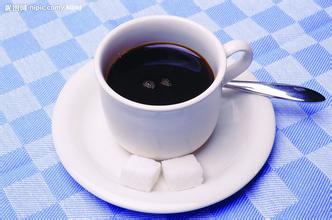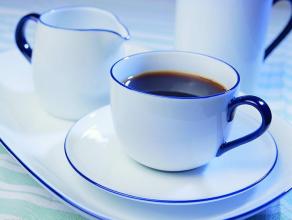Introduction to fine coffee with good sour taste in Antigua Coffee Manor, Guatemala
Guatemala is located in the tropics, the northern and eastern coastal plains have a tropical rain forest climate, the southern mountains have a subtropical climate, the year is divided into two dry and wet seasons, with the wet season from May to October and the dry season from November to April of the following year. The narrow and fertile flatlands on the Pacific side of Guatemala have a tropical climate. The central plateau is also the cultural center of Guatemala, where temperatures are mild all year round at an altitude of 1300 to 1800 meters, with daily temperatures between 18 and 28 ℃, and higher levels tend to be colder in January and February. The annual precipitation is 2000-3000 mm in the northeast and 500-1000 mm in the south. [8]
Topography and geomorphology
All of Guatemala is made up of mountains and plateaus. There are Kuchu Matanes Mountains in the west, Madre Mountains in the south, volcanic belts in the west and south, with more than 30 volcanoes. Tahumurco volcano is 4211 meters above sea level, which is the highest peak in Central America. Earthquakes are frequent. There are Petten lowlands in the north. There are narrow coastal plains on the Pacific coast. The major cities are mostly distributed in the intermountain basins in the south. The northern lowland plain Peteng is a tropical rain forest, and volcanoes on the central highlands can reach 4200 meters. [5]
Hydrology
There are several lakes in Guatemala, of which the largest lake is Lake Isawar in the province of Isawar and the deepest lake is Lake Attilan in the province of Solola. The main rivers that flow through Guatemala are the Motagua River, the Usuma Xinda River, the Chikso River and the Shaston River. The Chikso River is the source of the Ursuma Xinda River. [7]
Natural resources editor
The forest area of Guatemala accounts for half of the country, especially in the lowlands of Peteng.
Guatemala
Guatemala
Rich in valuable wood such as mahogany. Mineral resources include lead, zinc, chromium, antimony, gold, silver, mercury and nickel, with oil reserves of 1.43 billion barrels. The forest area accounts for 38% of the country's area. [8]
National symbol editor
Name of country
The Republic of Guatemala (The Republic of Guatemala, La Rep ú blica de Guatemala) is referred to as Guatemala. [10]
National flag
The Guatemalan flag, which was used in 1971, is rectangular with a ratio of length to width of 8:5. The face of the flag consists of three parallel and equal vertical rectangles, with white in the middle and blue on both sides; the white rectangle is painted with the national emblem in the center. The color of the national flag comes from the color of the original Central American federal flag. Blue symbolizes the Pacific Ocean and the Caribbean respectively, while white symbolizes the pursuit of peace, bitter and fragrant, and tastes good.
The coffee produced in the highland is mellow and has a good sour taste, which is well received and is the best material for mixed coffee.
Coffee varieties:
Arabica species (Arabica):
It accounts for 85% of total coffee production, including Brazil, Colombia, Guatemala, Ethiopia and so on. The beans are turquoise, thin and small, with special aroma and sweet acid, which is good to drink with other coffee. Excellent quality, more suitable for public taste.
Robada species (Robusta):
Roughly planted in Java, Indonesia, drought-resistant and insect-resistant; bitter taste, but bitter with fragrance, especially after cooling with a unique sweet taste, suitable for the preparation of cold coffee, mellow and extremely bitter.
Liberia plus species (Leberica):
The quantity of this variety is very small, most of it is used to synthesize coffee and make coffee essence, it is difficult to see in the market, the quality is not good, and the flavor of the single product is not good.
Guatemalan coffee beans are mostly cultivated in high-altitude volcanic soils belonging to the most advanced Arabica (Arabica) variety. Due to the long ripening period, the beans are medium and dense (Guatemalan coffee beans are graded not on the basis of particle size, but on the basis of shortcomings), and the bean color is dark turquoise. The unique sour taste of fragrance, mellow, sweetness and freshness is characterized by the aroma and taste of coffee beans hidden in its sour taste. Therefore, coffee beans with this characteristic can be called high-quality coffee beans. The name of the product is suitable for the taste characteristics of baking degree.
The average elevation of dangerous countries is high, with coffee belts distributed above 1500 meters and between 14 and 16 degrees north latitude, it is the easiest to grow extremely hard beans, all of which are washed, of which 45% belong to fine grade, the proportion is quite high, and there are also a small amount of Robusta.
The varieties of coffee in dangerous countries are mainly bourbon, Tibika, Kaduai and Kaddura, and there are also a few yellow bourbon, Rosa and Pacamara. The varieties are quite diverse, but it is also commendable to retain the ancient Tibica and bourbon.

Important Notice :
前街咖啡 FrontStreet Coffee has moved to new addredd:
FrontStreet Coffee Address: 315,Donghua East Road,GuangZhou
Tel:020 38364473
- Prev

Introduction to the flavor and taste characteristics of the coffee producing area of Saint Roman, Costa Rica, which has a unique and strong flavor.
A total of 34 natural parks have been established and developed in Costa Rica, and by 2014, they have all become important tourist attractions for earning foreign exchange. According to statistics released by Colombia's National Nature Conservation Agency, in the first half of 2003, more than 500,000 visitors visited natural parks, earning more than 2 million US dollars, an increase of 2.3 times over last year. The leader of the increase in income from natural parks in Costa Rica
- Next

Flavor and taste characteristics of Panamanian coffee manor with various flavors introduction of fine coffee beans
Panama is located on the Panamanian isthmus in Central America, bounded by Colombia to the east, the Pacific Ocean to the south, Costa Rica to the west and the Caribbean Sea to the north. The territory is S-shaped to connect North and South America, and the Panama Canal connects the Atlantic and Pacific oceans from north to south. It is known as the bridge of the world. [5] Panama has a land area of 75517 square kilometers, a land length of 772km and a width of 60 to 1.
Related
- Detailed explanation of Jadeite planting Land in Panamanian Jadeite Manor introduction to the grading system of Jadeite competitive bidding, Red bid, Green bid and Rose Summer
- Story of Coffee planting in Brenka region of Costa Rica Stonehenge Manor anaerobic heavy honey treatment of flavor mouth
- What's on the barrel of Blue Mountain Coffee beans?
- Can American coffee also pull flowers? How to use hot American style to pull out a good-looking pattern?
- Can you make a cold extract with coffee beans? What is the right proportion for cold-extracted coffee formula?
- Indonesian PWN Gold Mandrine Coffee Origin Features Flavor How to Chong? Mandolin coffee is American.
- A brief introduction to the flavor characteristics of Brazilian yellow bourbon coffee beans
- What is the effect of different water quality on the flavor of cold-extracted coffee? What kind of water is best for brewing coffee?
- Why do you think of Rose Summer whenever you mention Panamanian coffee?
- Introduction to the characteristics of authentic blue mountain coffee bean producing areas? What is the CIB Coffee Authority in Jamaica?

